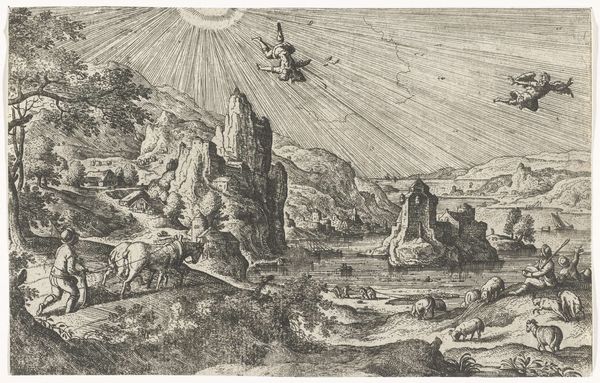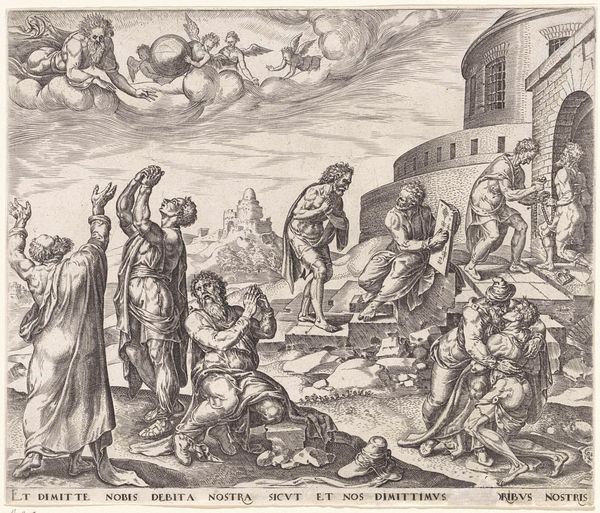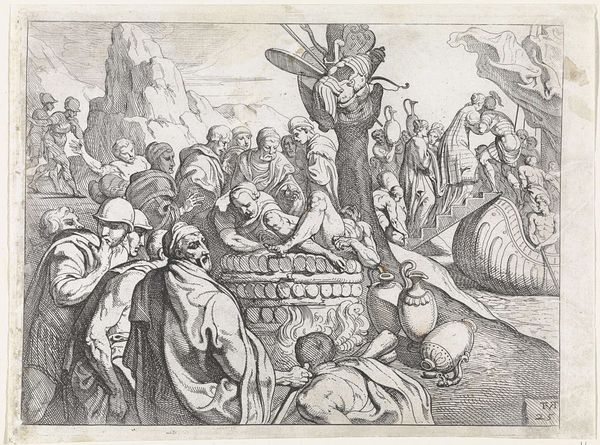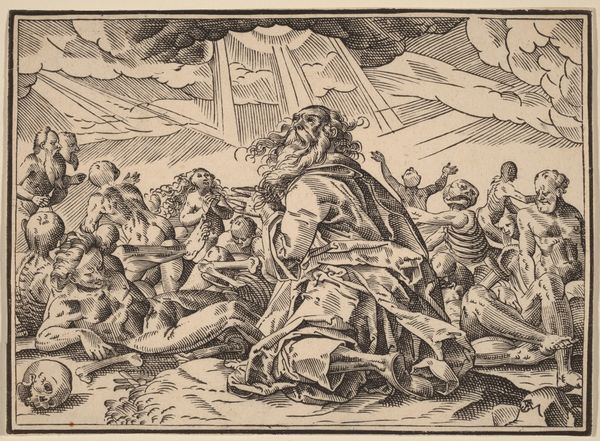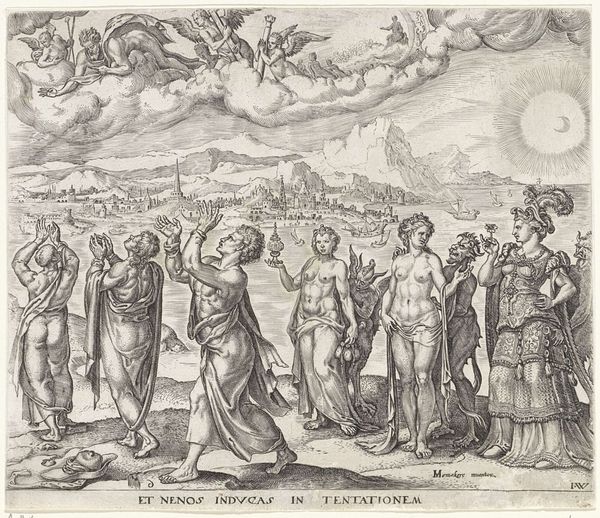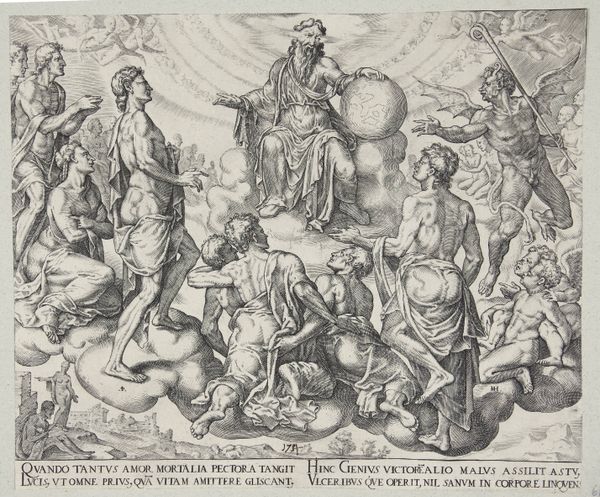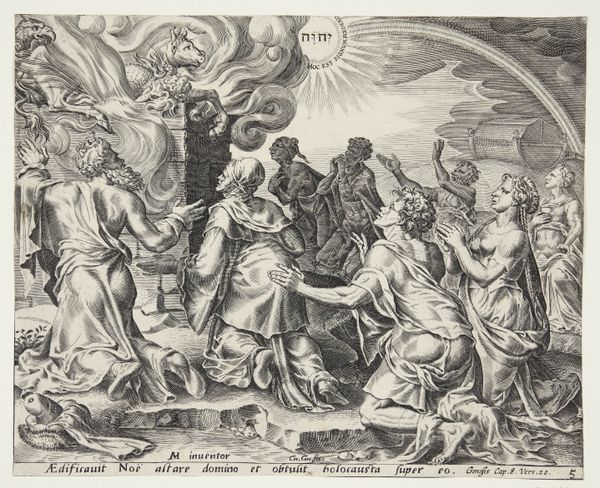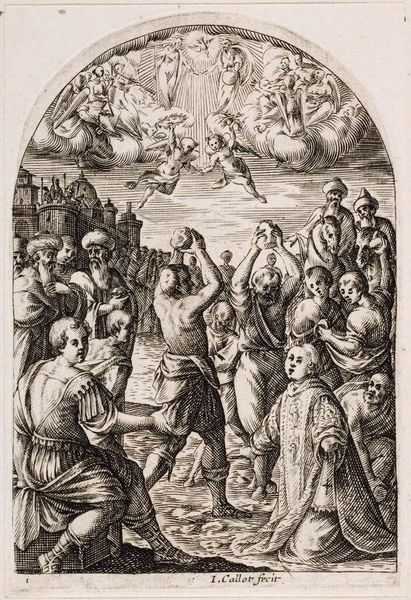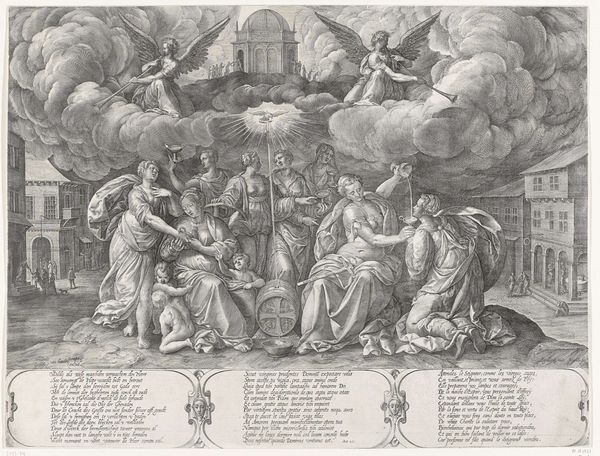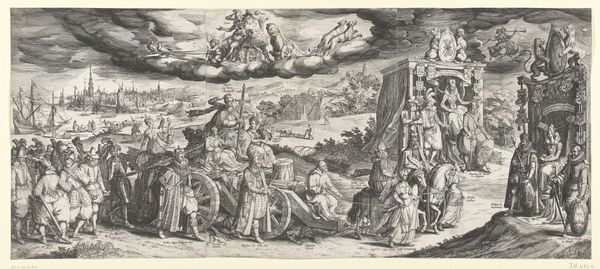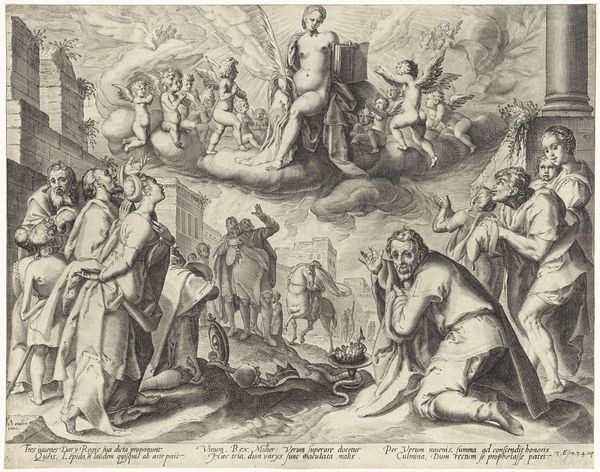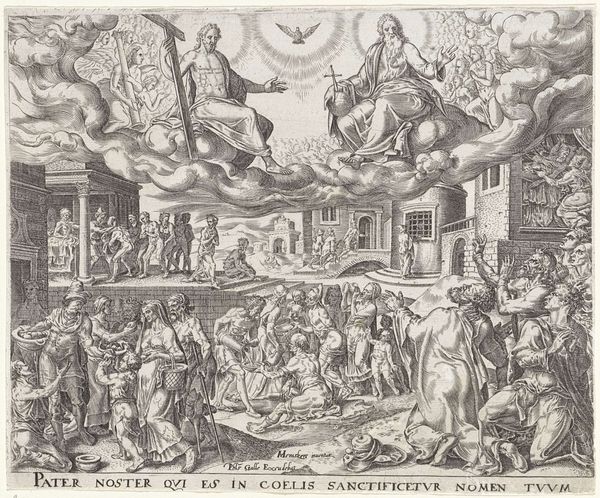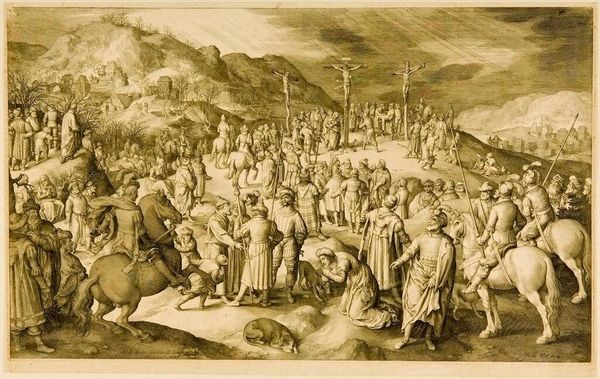
print, engraving
# print
#
pen illustration
#
pen sketch
#
mannerism
#
figuration
#
history-painting
#
engraving
Dimensions: height 207 mm, width 252 mm
Copyright: Rijks Museum: Open Domain
Curator: Here we have a 16th-century engraving attributed to Wierix, dating from around 1569 to 1573, titled "Red ons uit de greep van het kwaad"—"Deliver us from Evil". Editor: The contrast between the tightly rendered figures writhing on the left and the hopeful gazes on the right really jumps out. There is an immediate sense of anguish countered by, hopefully, deliverance. Curator: Indeed, Wierix masterfully contrasts damnation with salvation through formal composition. Observe the densely packed fallen figures overtaken by a devil, which he contrasts to a divine light shining on upright, pious ones. Editor: I'm curious about the historical climate that spawned this rather graphic depiction. Was there a specific political event influencing Wierix's allegorical treatment of good versus evil? Curator: The rise of Protestantism and resulting religious tensions likely fueled such stark visualizations of moral conflict. Note the almost theatrical mannerist style – elongated figures, exaggerated gestures – these heighten the emotional tenor. Editor: You are spot-on about that stylization! Wierix takes classical figuration but then contorts it, really playing on that sense of unease. It visually argues how faith and virtue must battle this 'evil.' But that landscape... what are we to make of the fiery, hellish city juxtaposed against this potential salvation? Curator: Consider that the 'city' may not be one in the literal sense. Perhaps a universal representation of worldly temptation against true devotion. A potent reminder of choice. It shows Wierix understood his visual language to convey this clear contrast. Editor: Thinking about the audience for prints like this, it offered a more intimate way for people to grapple with their spirituality amidst widespread anxiety. In the 16th century images held considerable didactic and propagandistic value. Curator: It shows, ultimately, how this small yet captivating engraving offers a complex interplay between composition, historical context, and symbolic depth—not only from Wierix himself, but also to the viewer centuries after it was produced. Editor: Precisely. It's easy to see this small, relatively unassuming artwork held enormous power. One offering, I would assume, spiritual comfort.
Comments
No comments
Be the first to comment and join the conversation on the ultimate creative platform.
